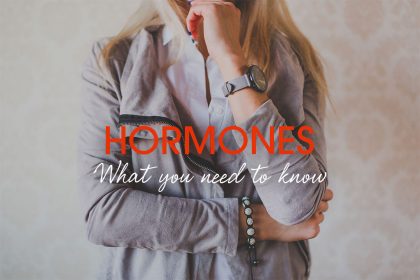The four stages of menopause and your treatment options
Are you noticing symptoms of menopause? Discover the four stages of menopause your body will go through, and your treatment options.
Your reproductive health is subject to many fluctuations throughout your lifespan. From the onset of your first menstrual cycle to the childbearing years, and finally, reaching menopause, your hormones are constantly shifting, making each stage a unique experience.
In this article, we’ll talk about the four stages of menopause and how to treat its symptoms.
When might you notice the symptoms of menopause?
On average, women start to experience the symptoms of menopause between the ages of 45 and 55. Some women might start earlier, while others begin their menopause stages much later. There are some instances where women experience regular periods, even in their late 50s, while some see their menstrual cycle disrupted after 35.
The early onset of menopause symptoms can be due to several reasons, the first being hereditary. So if your mother went through menopause early, don’t be surprised if you do too (not that it is a given that you will). Other external factors that might affect your menopause and cause it to begin early are chronic health issues like rheumatoid arthritis or diabetes.
If you are obese or smoke regularly, your symptoms may also occur earlier than other women. Even the continent and country you live in can affect the age at which you begin to notice menopause symptoms.
If you are in your early 20s or younger and starting to experience the symptoms of menopause, you might have an underlying medical condition that needs to be treated. It’s also important to be aware that you may experience various menopause symptoms that might differ from others. So don’t worry if your symptoms are not the same as those of your friends.
What are the four stages of menopause?
The menopause does not take place in a single moment. Instead it consists of four stages. The female reproductive system is complicated, and we are here to simplify it for you. So let’s look at the four different menopause stages you will go through.
1) Premenopause
Premenopause, also known as the stage before menopause, is sometimes used interchangeably with perimenopause, but they have clinical differences. Some women experience the same symptoms in premenopause as they experience in perimenopause, and some may not experience anything during the premenopause stage.
2) Perimenopause
Perimenopause is the stage that leads to menopause. Generally, you may experience it either three to five years before the menopause stage begins. But again, it depends on individual to individual.
Ahead of the change in your period pattern, you might already feel your hormones fluctuating. You might even have regular periods but suddenly feel the menopause symptoms hitting. Since your progesterone and oestrogen levels drop, you may experience any of the below perimenopausal symptoms:
- Vaginal dryness
- Extreme mood changes
- Hot flushes
- Urinary issues like pain while urinating or frequent urination
- Rapid heartbeats
3) Menopause
Menopause is where your ovaries have exhausted their ovarian follicles, resulting in failed production of progesterone and oestrogen. Due to the inefficient production of reproductive hormones, your periods become irregular and eventually stop.
So how do you know whether you have entered the menopause stage? You won’t realise your periods are gone until you spend two years without experiencing the flow.
Clinically, it is said that 12 months of absence of periods mean you’re in the menopause stage, but practically a large chunk of women can have no show for a year and then sudden period cycle for a year or two. So some doctors suggest waiting for two years before accepting your menstrual cycles have ended.
4) Post-menopause
Once you’ve crossed the two-year mark without your period, you have entered the post-menopausal stage and your hormones will gradually decrease.
This does not mean you won’t have any hormones, but you’ll deal with fewer hormones than in your earlier years. Gradually, you will feel better than you were during your menopause. Your body can cope better and feel more energetic since there won’t be any hormonal instability.
What are the treatment options for menopause symptoms?
During menopause and postmenopause, your menstrual cycle stops and your ovaries are no longer able to make oestrogen and progesterone. During this time, adding them artificially can help relieve some discomfort. Here are some ways of treating menopause symptoms safely.
Hormone therapy
Hormone therapy, or hormone replacement therapy (HRT), is an effective approach for replacing the hormones your body ceases to generate during perimenopause and menopause. This therapy can alleviate symptoms associated with hormone deficiencies. If you’re looking for natural supplements to help manage menopause symptoms, Menocil offers the best relief that can support your body through this transition.
Some of the menopause symptoms HRT can control are:
- Sleep problems
- Hot flashes
- Urinary infections and sudden or frequent urges to urinate
- Vaginal dryness
Some hormone treatment administration choices are similar to those for hormonal birth control. These choices include:
- Pills
- Patches
- Rings
- Vaginal creams
Other treatments
Apart from the HRT, some people follow other treatment options for menopause symptoms. These include:
- Herbal medicines
- Homoeopathy
- Acupuncture
- Chinese treatment
Please note that no scientific research has proven the efficacy of these options for treating menopause symptoms. Seek a medical professional for the right guidance.
Everyone’s experience of menopause is different
It is important to remember that each woman’s experience of menopause will be unique to them, and the information shared here just a general guide. Some women will encounter extended menopause, while others will have a more limited period. And the combination of symptoms at any given time will differ from woman to woman.
Photo by Giorgio Trovato










